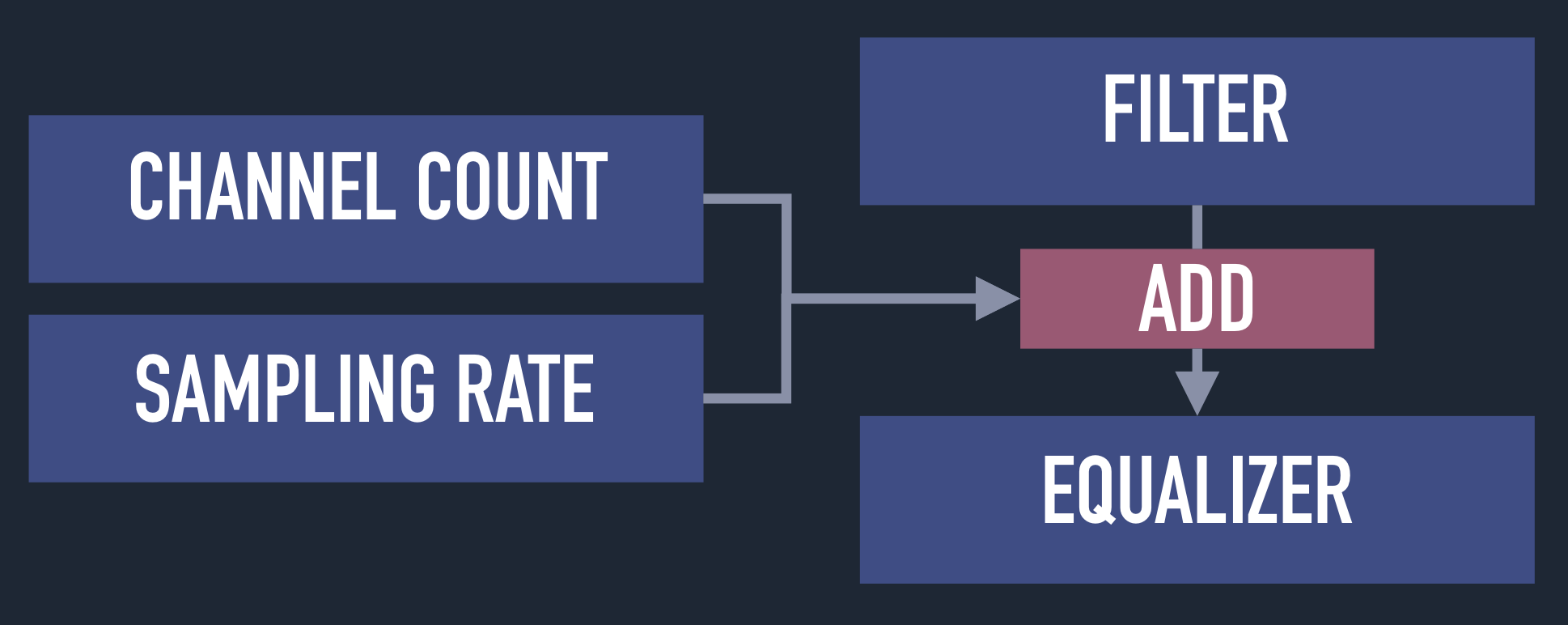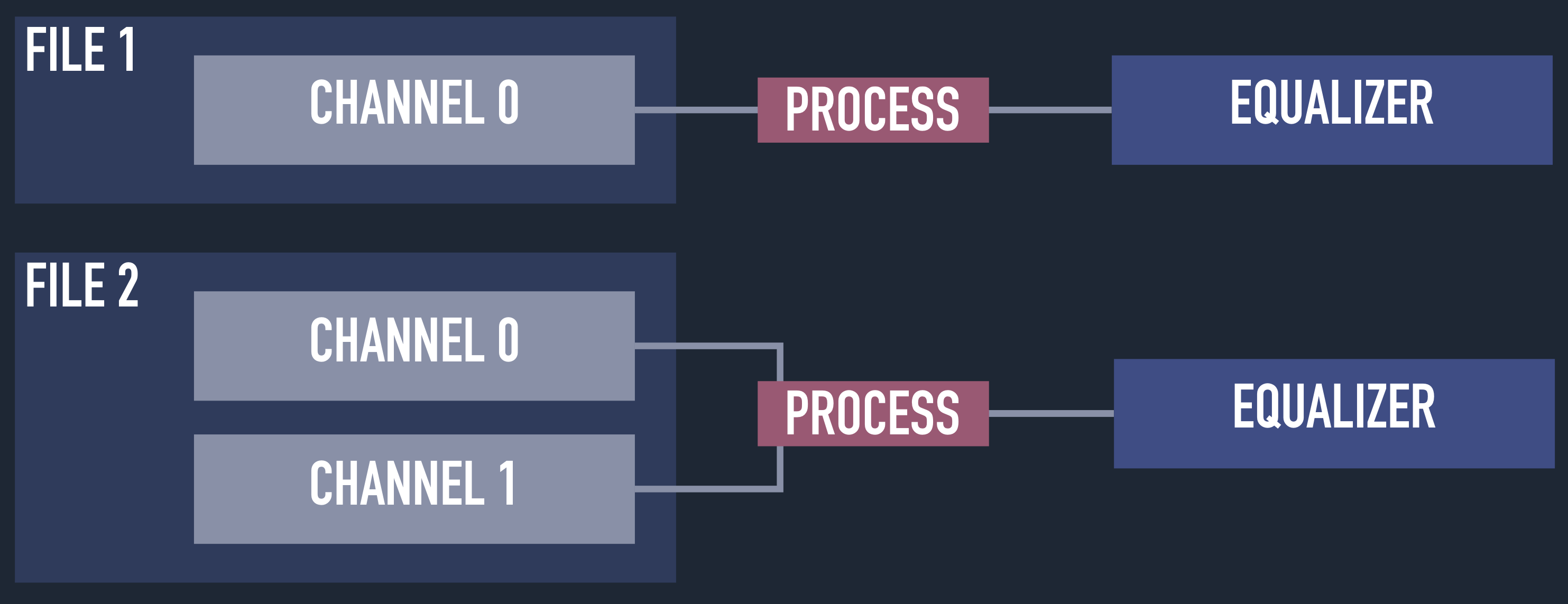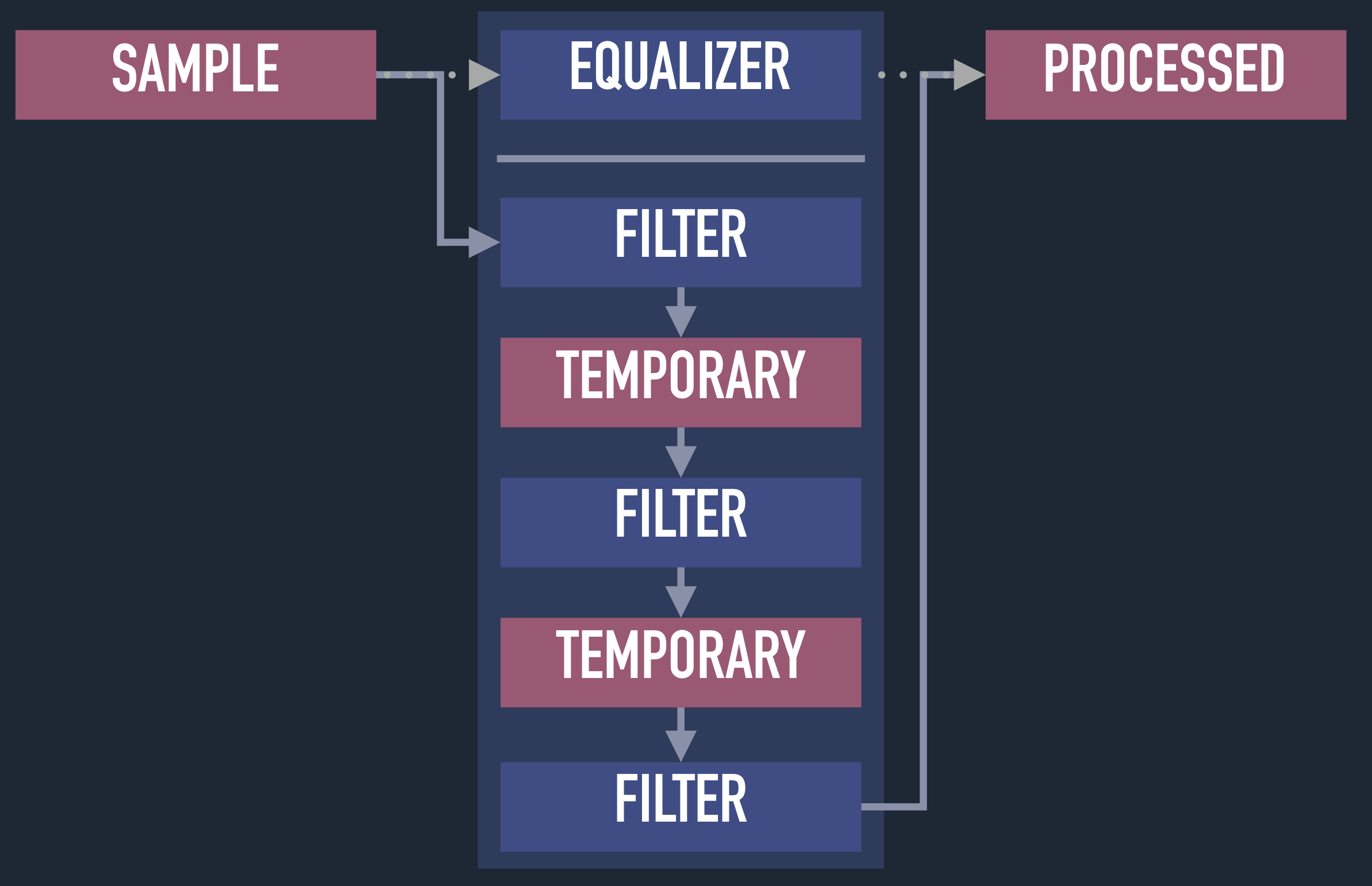Multichannel Equalizer Concept

A standard multichannel equalizer is basically a vector of biquad filters. Initially we implemented the equalizer as a map of filters. In a later optimization phase we observed that a vector outperforms a map.
Hence for performance reasons we finally implemented the equalizer as vector of filters.
The channel count determines the amount of channels that has to be supported by each filter.
For consistency reasons we introduced a sampling rate for an equalizer. Each filter of an equalizer should have the equalizer’s sampling rate.
When a filter is added to an equalizer, the filter’s sampling rate and channel count are attuned to the equalizer’s values.

Each audio channel is processed by the same vector of filters, i.e. equal filter configurations.
The channels of an equalizer are implicitly the channels of the biquad filters. There is no explicit channel implementation for an equalizer.

Processing audio data with an equalizer is serial filtering with all its filters on a sample by sample basis. Temporary results get passed from one filter to another until all filters have processed the sample.
As all used filters are linear and time-invariant filters the processing order does not matter.

Multisetting Equalizer Extension
In order to enable filtering with different filter configurations (settings) for different audio channels we designed the multisetting equalizer. A multisetting equalizer is basically a vector of multiple multichannel equalizers. As a result it is possible to manipulate the equalizers and their filters independently from each other.
Summary
A multichannel equalizer only allows to filter multiple audio channels with equal filter configurations. The M4S equalizer component is based on a multichannel equalizer.
For future projects or equalizer implementations and as a proof of concept we developed a multisetting equalizer which allows different filter configurations for different channels.